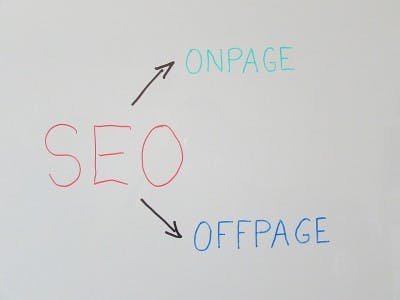A common problem for on-page optimization is keeping the content within your website organized so that the search engines can make a clear distinction as to the theme of your pages. If you create a website where your content is well structured and if the search engines can make a distinction as to the theme of each page and their relationship to the overarching theme of your site, you’ll have a much better chance of ranking high for the keywords you’re optimizing for.
One of the best ways to accomplish this is to use a silo structure to organize the content of your site and make it easy for your users to access your content. This article will give you a simple explanation of silo structure and how you can use it to build a well-optimized site.
What is Silo Structure?

The term “silo structure” comes from the concept of silos which are used to sort materials in industrial settings for the sake of keeping the contents of the silos pure. For example, different types of grains are often organized into large columns called silos in order to keep the grains from becoming cross-contaminated. On a website, these “silos” are the sections of your website which contain the content that is optimized for your secondary keywords.
Notice that the primary theme of this site is based on the keyword “how to play the guitar,” and so that’s the keyword you would use in the metadata, page title, headers, and the content of your home page. From there, you would have a navigation bar that contained links to your secondary pages, which would be optimized for your secondary keywords.
For example, your secondary page #1 would contain the keyword “how to play the blues guitar” in the metadata, page title, headers, and in the content this page. This page would also include links to the articles which were specific to the topic of “how to play the blues guitar,” which are represented by articles #1 and #2 in the example above. This pattern of content organization would apply for each of your secondary pages and for the articles which were optimized for the same themes as those secondary pages.
Why is Silo Structure Important?
When the search engine spiders crawl your site, they’re looking for how relevant your content is to the terms which you’re optimizing for. If you have the keywords, “how to play the guitar,” “how to play the blues guitar,” “how to play the classical guitar” and “how to play acoustic guitar” all jumbled onto your home page, your secondary pages, and your articles, the search engines will have a hard time determining the specific theme of your site.
So if you have competitors who are specifically optimizing for your secondary keywords (and if your niche has any amount of competition you can bet they’ll be out there), their sites will be indexed above yours because they’ve made it crystal clear as to what theme their site is optimized for. However, if you have silos of carefully optimized content for specific keywords related to your main theme, your site will have a much better chance of ranking high for your subthemes and for your primary theme.
Using a silo structure will also make it much easier for you to determine an ongoing strategy for adding content to your site and increasing its value with the search engines and your visitors.
Maintaining a Great Silo Structure
Creating fresh content for your site is the key to increasing your value with the search engines and keeping ahead of your competition. If you have a strong silo structure, to begin with, it will be easy to determine your ongoing content creation strategy based on that structure. For example, for the site in the example, you have three secondary categories for which you can create articles to add to the content of your site. So an example of your weekly content creation strategy might be:
Monday: Write and post one article on “how to play the blues guitar.”
Tuesday: Write and post one article on “how to play the classical guitar.”
Wednesday: Write and post one article on “how to play the acoustic guitar.”
Thursday: Write and post one article on “how to play the blues guitar.”
Friday: Write and post one article on “how to play the classical guitar.”
Saturday: Write and post one article on “how to play the acoustic guitar.”
After about three months of applying this kind of content creation strategy, you could proceed with a monthly content creation strategy, again based on your overall silo structure. This strategy would be to create one article per week for each of your three categories. By the time six months had passed, you’d have a well-structured site with over 100 unique articles, which (provided that you did good keyword research) would be sure to bring you a good ranking in the search results.
Conclusion
The key to success in building a well-optimized website is a good foundation of solid keywords and constancy in applying the above strategy for structure and for content creation. Coupled with solid off-page SEO, this can make your site stand out and reward you with lots of qualified organic traffic.
